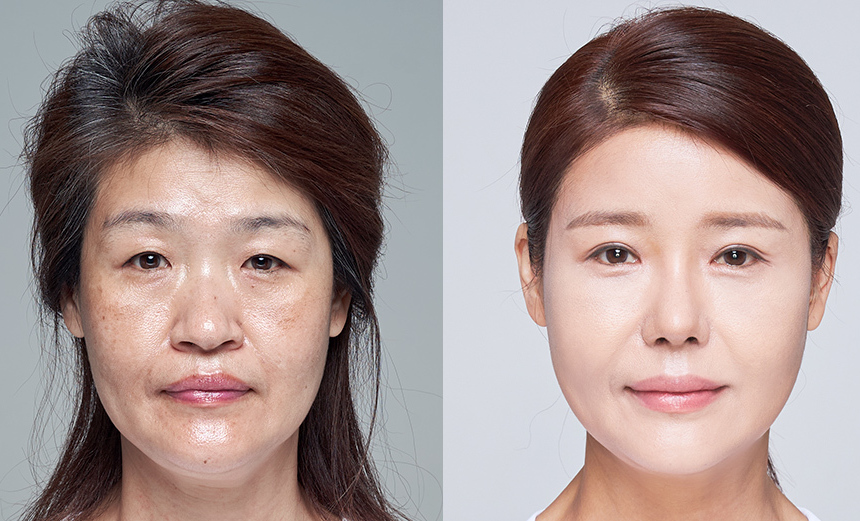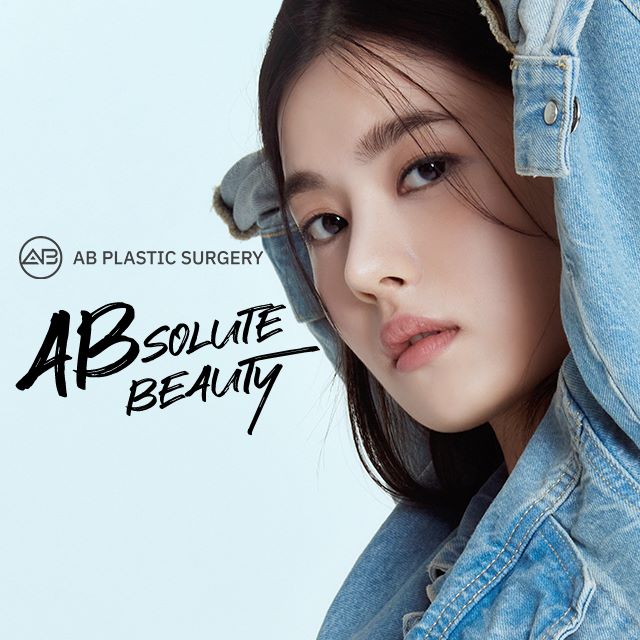Korea's Blepharoplasty Revolution: Reclaiming Youthfulness
Table of Contents
1. Why Blepharoplasty Is The Anti-Aging Phenomenon
2. Why Korea? The Epicenter of Blepharoplasty Excellence
3. Upper Blepharoplasty: Revitalizing Your Gaze
4. Lower Blepharoplasty: Eradicating the Signs of Aging
5. Blepharoplasty Aftercare: Dos and Don'ts
6. Choosing the Right Hospital for Your Plastic Surgery Journey Matters
In the realm of cosmetic surgery, AB Plastic Surgery Korea stands as a colossus, renowned for its pioneering techniques and exceptional outcomes, particularly in the field of blepharoplasty. This surgical procedure, aimed at addressing the aging signs around the eyes, is categorized into two primary types: upper and lower blepharoplasty. Each targets specific issues related to the aging process, offering a more youthful and revitalized appearance. This detailed exploration delves into the nuances of these procedures, their implications for anti-aging, and why AB Plastic Surgery Korea is at the forefront of this transformative journey.
Why Blepharoplasty Is The Anti-Aging Phenomenon

Blepharoplasty is considered a cornerstone of anti-aging surgery due to its effectiveness in addressing some of the most prominent signs of aging. The eyes play a crucial role in facial expressions and interactions; thus, rejuvenating the area around the eyes can significantly impact one's overall appearance and self-perception. By tightening drooping skin and removing excess fat, blepharoplasty can help patients look several years younger, enhancing their facial symmetry and aesthetics.
Moreover, the psychological benefits of blepharoplasty are profound. Patients often report improved self-confidence and satisfaction with their appearance, which can lead to positive changes in social and professional interactions. The ability to look as young as one feels can be a powerful motivator, making blepharoplasty a sought-after procedure for those wishing to turn back the clock.
Why Korea? The Epicenter of Blepharoplasty Excellence
AB Plastic Surgery Korea's reputation as a global leader in cosmetic surgery, particularly blepharoplasty, is not unwarranted. Our surgeons are celebrated for their meticulous technique, innovative approaches, and the ability to achieve natural-looking results. Cosmetic surgery at AB Plastic Surgery Korea combines artistry with precision, ensuring that each procedure is tailored to the individual's unique facial features and aesthetic goals.
The focus on education and continuous training means that our surgeons are well-versed in the latest techniques and technologies, allowing them to offer a range of options to their patients. Furthermore, the competitive nature of the cosmetic surgery industry in Korea drives clinics and surgeons to maintain the highest standards of care and safety.
Upper Blepharoplasty: Revitalizing Your Gaze

Upper blepharoplasty, often referred to as an "eye lift," aims to rectify the age-induced sagging of the upper eyelids. Over time, the skin loses its elasticity, and the fat around the eye can become more prominent, leading to a droopy, tired appearance. This not only affects the aesthetics of the face but can also impair vision. The procedure involves removing excess skin and fat, and in some cases, tightening the underlying muscles to restore the eyelid's youthful contour. Precision is paramount, as the goal is to enhance the eye's natural shape without altering its inherent expression.
Surgeons begin by making incisions along the natural crease of the upper eyelid, meticulously excising surplus skin and fat. The incision lines are carefully planned to ensure they are well-concealed within the natural folds of the eye. This strategic approach minimizes visible scarring, leaving the eyes looking naturally refreshed and more open.
Upper Blepharoplasty at AB Plastic Surgery Korea: The Surgical Procedure

-
Anesthesia: Upper blepharoplasty can be performed under local anesthesia with sedation or general anesthesia, depending on the extent of the surgery and the patient's preference.
-
Incision: The surgeon makes precise incisions along the natural crease of the upper eyelids. These incisions are carefully planned to ensure that the resulting scars are well-concealed within these natural folds once healed.
-
Removing or Repositioning Fat: Excess fat may be removed or repositioned to eliminate puffiness in the upper eyelids.
-
Removing Excess Skin: Excess skin that causes drooping and obscures the natural fold of the upper eyelid is carefully trimmed away.
-
Muscle Adjustment: If necessary, the underlying muscles may be tightened to provide additional support and enhance the eyelid's contour.
-
Closing the Incisions: The incisions are closed with fine sutures, which help minimize scarring. In some cases, surgical adhesive or tape may also be used.
Lower Blepharoplasty: Eradicating the Signs of Aging

Lower blepharoplasty addresses the challenges posed by under-eye bags, puffiness, and wrinkles, which are telltale signs of aging. The procedure involves the removal or redistribution of fat in the lower eyelid and the tightening of skin to smooth out fine lines and restore a firm, youthful appearance. This targeted correction helps to alleviate the appearance of fatigue and aging, contributing significantly to a rejuvenated facial aesthetic. The choice between the transcutaneous and transconjunctival approaches depends on the patient's specific conditions and the surgeon's expertise, highlighting the importance of a personalized surgical plan.
How Lower Blepharoplasty Is Done at AB

-
Anesthesia: Lower blepharoplasty can be performed under local anesthesia with sedation or under general anesthesia, depending on the complexity of the procedure and the patient's comfort level.
-
Incision Making: There are two main techniques for making incisions in lower blepharoplasty:
-
Transcutaneous approach: The incision is made just below the lash line, allowing the surgeon direct access to remove excess skin and fat.
-
Transconjunctival approach: The incision is made inside the lower eyelid, which is preferred for removing or repositioning fat without removing skin. This method is beneficial for younger patients with more elastic skin and is less invasive, reducing the risk of visible scarring.
-
-
Fat Removal or Repositioning: Depending on the patient's needs, excess fat may be removed to reduce puffiness, or it may be redistributed to eliminate hollows under the eyes for a smoother, more youthful appearance.
-
Skin Removal: In the transcutaneous approach, excess skin is removed to address wrinkles and sagging.
-
Muscle Tightening: If necessary, the surgeon may tighten the underlying muscle to enhance the contour of the lower eyelid and create a firmer, more youthful look.
-
Incision Closure: The incisions are closed with fine sutures, which are typically removed within a week after the surgery. If the transconjunctival approach is used, sutures may not be necessary, or self-dissolving sutures may be used.
Blepharoplasty Aftercare: Dos and Don'ts
Post-operative care is crucial for optimal healing and achieving the best outcomes after lower and upper blepharoplasty. Here are some essential do's and don'ts from AB surgeons to follow after your surgery:
Do This After Surgery
-
Follow Your Surgeon’s Instructions: Adhere to all post-operative care instructions provided by your surgeon, as these are tailored to your specific needs and the details of your procedure.
-
Keep Your Head Elevated: Especially during the first few weeks post-surgery, sleeping with your head elevated can help reduce swelling and promote faster healing.
-
Use Cold Compresses: Applying cold compresses (not directly on the eyes) can help minimize bruising and swelling. Follow your surgeon's guidance on how often and how long to apply them.
-
Attend Follow-up Appointments: Post-operative visits allow your surgeon to monitor your healing and address any concerns. Do not miss these appointments.
-
Take Prescribed Medications: If your surgeon prescribes medication for pain or antibiotics, take them as directed to manage discomfort and prevent infection.
-
Protect Your Eyes from the Sun: Wear sunglasses and a hat when outdoors to protect your healing eyelids from sun exposure, which can contribute to swelling and affect scarring.
-
Maintain Cleanliness: Keep the eye area clean according to your surgeon's recommendations, usually involving gently cleansing and applying any prescribed ointments.
Do Not Do This After Surgery
-
Rub Your Eyes: Avoid rubbing or touching your eyes during the healing process, as this can interfere with healing and potentially cause damage.
-
Engage in Strenuous Activities: Avoid heavy lifting, vigorous exercise, or any activity that could increase blood pressure and lead to bleeding or more swelling. Wait until your surgeon gives you the clear to resume such activities.
-
Wear Contact Lenses: Avoid wearing contact lenses for the time recommended by your surgeon, usually for at least two weeks post-surgery, to avoid irritation and pressure on the eyelids.
-
Use Makeup: Do not apply eye makeup until your surgeon says it's safe. Makeup can introduce bacteria and irritate the healing tissues.
-
Smoke: Smoking can significantly slow the healing process and increase the risk of complications. Avoid smoking for several weeks before and after surgery.
-
Ignore Signs of Complications: If you experience unusual symptoms such as severe pain, vision changes, or signs of infection (increased redness, discharge, or fever), contact your surgeon immediately.
-
Expose Yourself to Potential Irritants: Stay away from dusty, windy, or smoky environments to prevent irritation and dryness in your eyes during recovery.
Choosing the Right Hospital for Your Plastic Surgery Journey Matters

As we wrap up our in-depth look at the transformative potential of blepharoplasty, it's evident that this procedure offers a unique opportunity to combat the signs of aging, revitalizing and refining one's appearance. With its focus on both the upper and lower eyelids, blepharoplasty can dramatically rejuvenate your look, restoring a youthful vibrancy to your eyes.The precision, personalized care, and advanced techniques discussed underscore the significance of selecting a reputable clinic and experienced surgeons for such a journey.
Nestled in the heart of Seoul, AB Plastic Surgery Korea stands as a beacon of excellence in the field of cosmetic surgery, particularly blepharoplasty. Renowned for its cutting-edge methods and outstanding results, AB Plastic Surgery Korea invites you to explore the possibilities of eyelid surgery with our team of expert surgeons. Dedicated to delivering natural, harmonious results that reflect your individual beauty goals, we ensure a safe, comfortable, and rewarding experience from start to finish.
If the idea of turning back the clock and unveiling a refreshed, more youthful version of yourself appeals to you, consider embarking on your blepharoplasty journey with AB Plastic Surgery Korea. Reach out to us today to book your consultation and take the first step towards a brighter, more vibrant you. Let's discover together how blepharoplasty can unlock a renewed sense of confidence and beauty.





